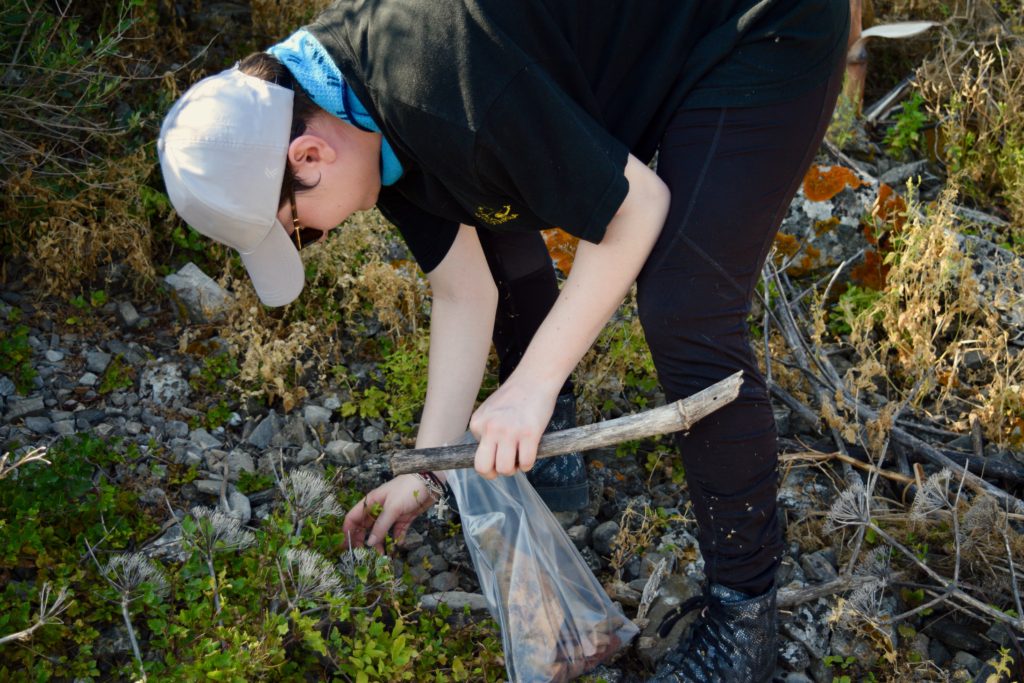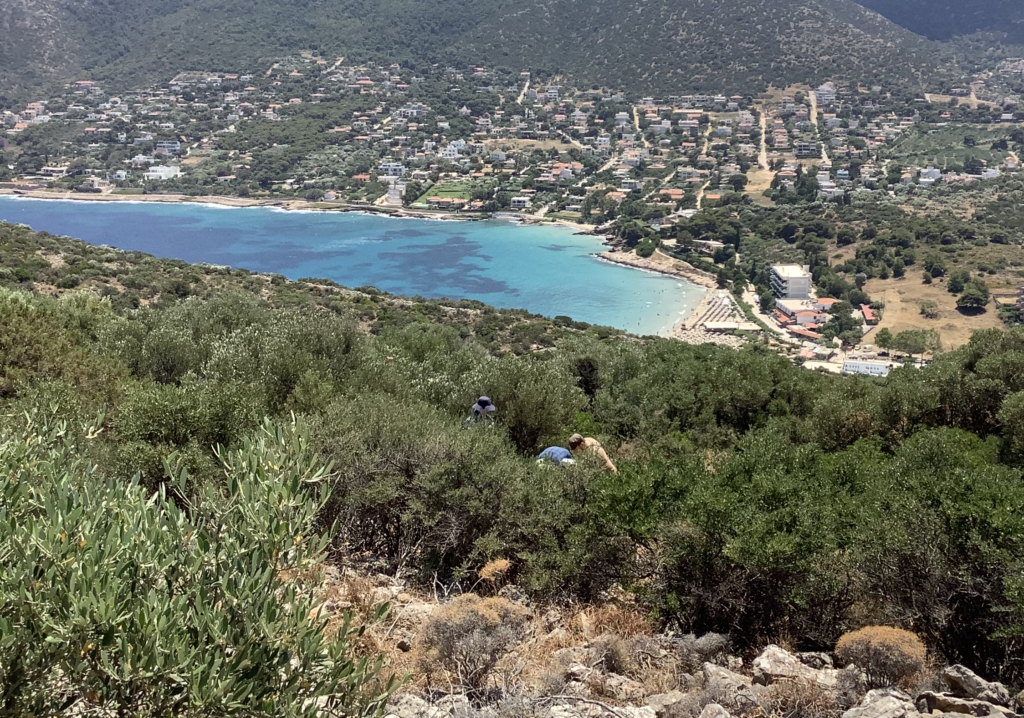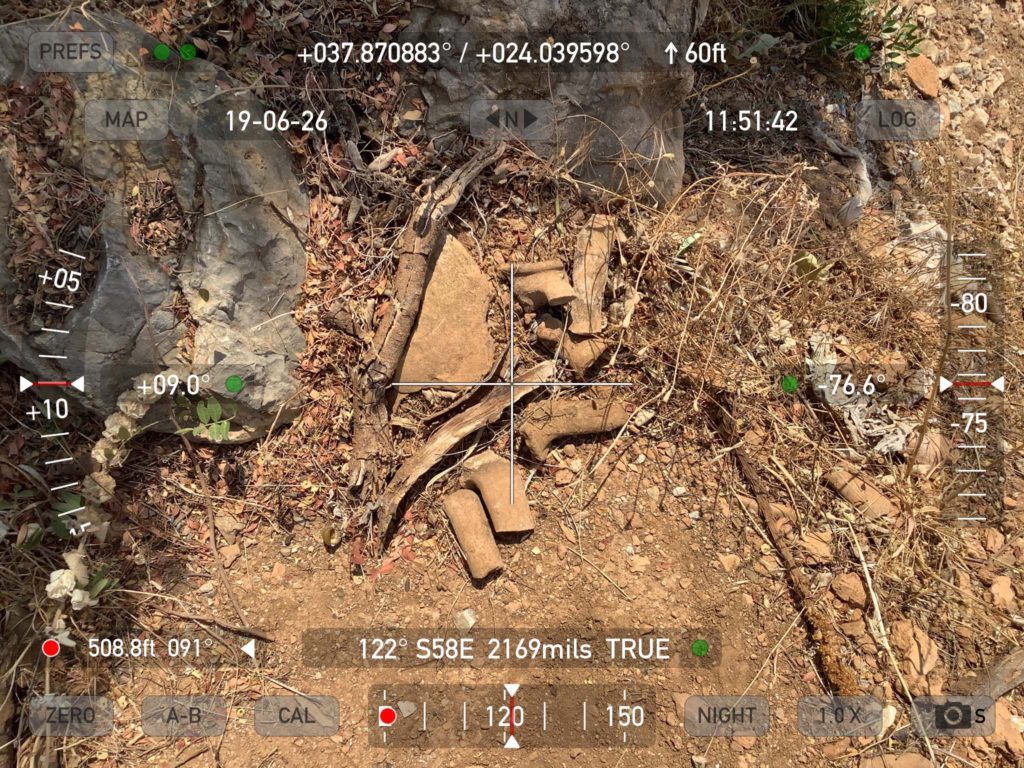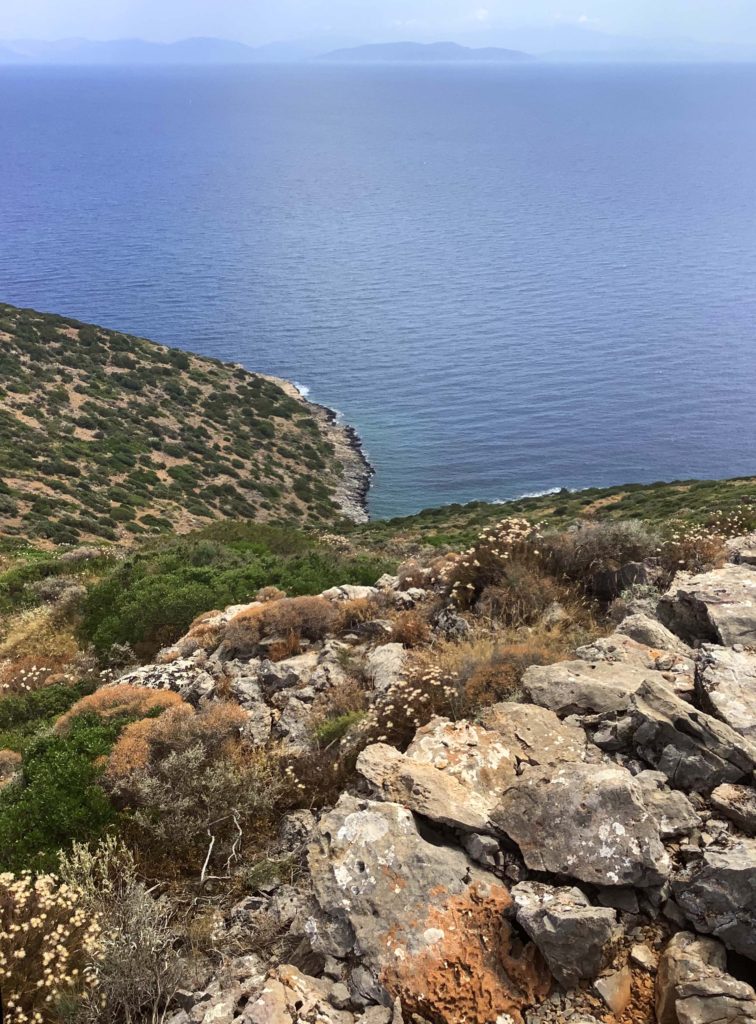Editorial Note: This post was written by Kat Apokatanidis, a University of Toronto PhD student, about working at the site of Koroni.

There is something defiant about being an archaeologist. The job is to go to places that usually are left alone. From tombs to acropoleis these spaces are now all more or less forgotten, consumed by time because that is how the world works. These are the first couple of thoughts that cross my mind as I climb the mountain side to reach the acropolis of Koroni for the first time. The climb is, to put it mildly, an effort. It is early in the morning, the sun barely cresting the peak of the acropolis. I lift my head and try to see above the maquis to estimate how far we have left to climb. My legs are already burning from the effort. Every morning on the BEARS project I curse my sedentary lifestyle. Without fail (or, rather, with the utmost failure) I am always the last one to reach the circuit of fortifications at the top of the peninsula where we are surveying. Today is no different. Completely out of breath by the time I reach the top, embarrassingly taking forever to catch up with the others, I try and mask my feeble wheezing. Thankfully, the others are drinking water while admiring the view, not taking account of how winded I am.

After our team leader briefs us on the day’s plans (the number of units we were to try and cover, whether or not we would be doing total collection of finds, the new skills we were to try and learn by taking up different posts like data entry or mapping) we set to work. Crouching over the ground, battling (and mostly losing) with maquis, and trying not to lose myself in the incredible views that spread out below the acropolis, I marvel at the fact that though thousands of years have passed we still find things lying around on the ground in plain sight. I arrived on the project expecting to find some artifacts on the surface that would potentially hint at how important this area could have been in antiquity. But I did not expect that we would find so many artifacts lying on the surface. Broken amphorae handles, sherds (yes, not shards) from pottery vessels of all kinds, black-glazed fine-ware, even remains of rooms and walls; all of these can still be found after so many years, barely even hidden in the landscape.

A lot of what we talk about as we work concerns using these surface remains to get a sense of the space that was occupied thousands of years ago. For instance, we are trying to figure out where and how artifacts found were dispersed and how and where they came to be concentrated in particular areas. It is work that demands a different, more nuanced understanding of how space is shaped throughout the years than an excavation would do, since so many factors have impacted the current distribution of material around an occupied landscape. These are tricky problems to work out, and we are trying to address them by thoroughly investigating and documenting the surface in an organized way. As a result, I feel a sense of real accomplishment each time we finish a unit. Finishing up procedures of our last unit before our lunch break, I steal a glance at the area we have covered so far, my teammate still counting sherds and rooftiles. I feel that today I have gained a better understanding of the layout of the acropolis; having started working in the valley of the settlement earlier in the week and finally climbing to the top and working this space, I can begin to imagine the ancient settlement of Koroni as a real, living place.

This feeling of bringing the past to life in one’s imagination is something that arises at various, seemingly random moments throughout one’s studies in Classics. As a former philology student I have felt it at numerous points throughout my years in the field of Classics. Indeed, there is something quite magical about the realization that you can understand literary texts from two thousand years ago. Having said that, archaeology is different. When in the field, imagining the past is inevitable; there is something about standing in a place and touching things from so many years ago that incites aggressive daydreaming. The things you notice are peculiar: the way the amphora handle fits in your fist, how smooth black-glazed fine-ware feels against your fingers, what it means to look out to the horizon from what remains of defensive walls; one gets a sense of time as a continuum. The people who lived here, on the acropolis of Koroni, stored their food as I do, used nice plates from which to eat like I do, and stared at the horizon to where Raftis island stands as beacon to the sea ahead, and farther still, to the blueish hues of the island of Euboea looming in the distance, just like I am doing now. On the other hand, double checking the data from the unit we have just finished and turning off the iPad, I am not dreading a pirate attack while I head over to where our team leader has found a shady place with a killer view for our lunch break.

The western part of the Koroni peninsula is now partly occupied by country houses, while the town of Porto Rafti occupies the shores of the bay to the northwest. But we take our lunch break up on the highest point of the citadel and look out to the east, the landscape is peaceful, almost completely silent. It is so quiet, in fact, that I turn in surprise as a butterfly flaps its wings at a nearby branch of a maquis. I cannot say I have ever heard the flap of a butterfly’s wings before; the quiet that exists up here is so profound that you find yourself noticing small things, like the shadows cast by ants, or the indolent way with which a spider repairs her web. And though this silence most definitely did not permeate the abandoned site when it was at its prime, this current desolation, this current peace is as much part of archaeology as daydreaming about the past is. The short breaks we took were some of the moments I looked forward to the most; I eagerly would select a flat-looking rock for a seat, take out my meal and settle in the shade of the thicket. When people are tired, yet love what they do for a living, one finds that conversation among them is most interesting. So, when my teammates start conversing, I listen intently. During these lunch breaks archaeology starts to make sense to someone like me, with no training in archaeology, and with no prior knowledge of what archaeology can uncover.

As the conversation turns to ideas and theories on what life in Koroni would have been like, I learn a lot about the way that archaeologists approach problems. I try to follow the logic as my teammates speculate on how people would have decided where to build houses or where to post guards on the walls, which question leads them to a whole different conversation about reconstructing the original height of the ruined fortifications. Even though I’m not used to talking about problems like this, the group includes me in their discussions, explaining some of the things they think are especially challenging concepts. I try to think of something intelligent to say yet find that I cannot contribute very much. But I listen intently, coming to the realization that no matter how gruelling, no matter how demanding, no matter how exhausting physically and mentally the work of being an archaeologist might be, it has a far greater allure than the study of ancient literature, and I am excited to learn more. Compared to my new colleagues, I feel like an ant straining to gaze up at giants. Fortunately for me, up here, on the long-abandoned acropolis of Koroni, even an ant can cast a shadow.

